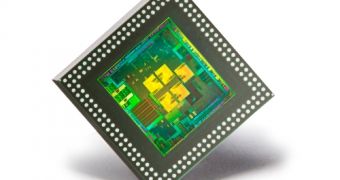Initially, if NVIDIA, or any other processor and SoC maker, scored a few million orders for a tablet chip, it was cause for celebration, but the stakes have definitely changed.
Nowadays, with the likes of Amazon Kindle Fire and other low-cost slates on sale, makers of ARM chips are being asked to provide such huge shipments for just one device.
NVIDIA is enjoying a particularly lucrative month, according to some “sources” that Digitimes cited.
Supply chain makers say that the Santa Clara, California-based company has been asked to deliver 3 to 4 million Tegra 3 chips to manufacturers of Google's Nexus 7 Tablet PC.
All the Nexus 7 that will result from the delivery are bound to be sold before the year is out.
That means that, in just half a year, NVIDIA will get $75 million, or 61.60 million Euro, as every one Tegra 3 core-logic costs $25 / 20.53 Euro.
It is definitely a welcome change for the provider of ARM-based SoCs and graphics products. Though mobile platform demand is good, video processors and cards have been dragging their feet.
Speaking of which, the Nexus 7 is just one of multiple tablets that rely on Tegra 3 for performance. Thus, the total revenue from this sector may very well counterbalance the sluggish GPU sales.
Of course, the green team will have to step up its game in this field as well, now that Texas Instruments and Qualcomm have essentially caught up.
Fortunately, the Tegra 4 has been in development for some time and is expected to make an appearance in 2013, boasting a performance several times higher than Tegra 3 Kal-El. So far, we know that it features four Cortez A15 Cores and a 2 GHz clock speed. An improved iteration of Tegra 3, called Tegra 3+, will hold the line until it's finished.

 14 DAY TRIAL //
14 DAY TRIAL //